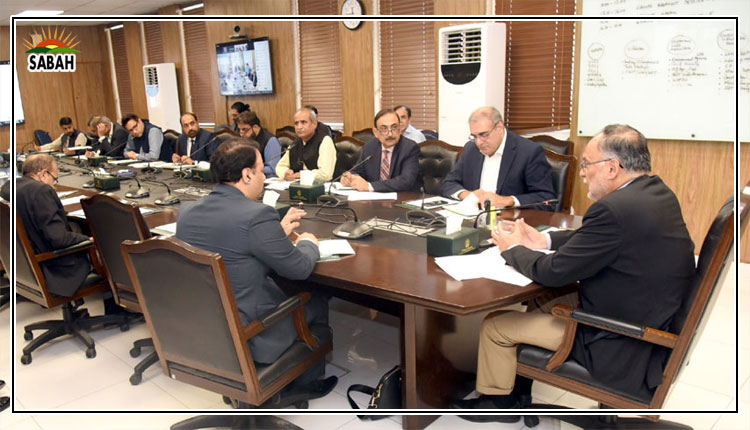The fight over the crown ….Arifa Noor
POLITICS has been stuck at the same roundabout for weeks now, with the government and its allies obsessed with passing a constitutional amendment; the PTI equally determined to oppose it; and Maulana Fazlur Rehman being the golden prize every party is trying to land.
The paralysis is understandable, if one hears all sides. According to the PTI and others on that side, the amendment will ‘destroy’ the judiciary as it stands.
On the other hand, the government has been frank about its fears that the new chief justice (on the basis of seniority) means their balancing act, à la Rose after the Titanic has sunk, will not last long and they will end up in icy cold water like Jack. It’s a matter of life and death for the set-up put in place on Feb 9.
Indeed, officials have expressed fears the new Supreme Court will look into its victory on ‘Feb 9’ and that it may be the beginning of the end. And it’s a fear based not just on the judgment of the incoming chief justice in the reserved seats case and what the incumbent has decided in cases such as the bat symbol one.
As this is Pakistan, the government’s solution is to manage the problem by clipping the Supreme Court’s wings via a constitutional amendment, which allows the creation of a new constitutional court or awards the government the powers to choose the chief justice from a panel of senior judges. There is far more to the mythical amendment, but as far as the apex court is concerned, the critical proposals are those which will allow the defanging of the current Supreme Court or the anointment of a different chief justice.
Perhaps one can say that the three transitions are now the main cause of instability in Pakistan.
So while we are told the numbers are complete (by Bilawal Bhutto-Zardari and some ministers) to pass the amendment or that the JUI-F’s support is needed to pass it, the truth is there is no end in sight to the crisis. Even if the amendment is passed, there is no guarantee the crisis will be resolved.
Some observers feel the legal community will hit the road in protest. Others argue the amendment might be challenged. A third fear is that the judiciary will react. Regardless, the point is that few feel the amendment’s passage will be the end of the matter.
There was a similar sense of crisis when former chief justice Umar Bandial was about to retire and Qazi Faez Isa was getting ready to don the top judge’s robes. This is why the notification about the new chief justice was issued weeks in advance, further weakening the authority of a head judge about to step into oblivion. This time, the crisis is more intense. Weeks before the amendment was even official, there were rumours that the chief justice would not be retiring. Now if his retirement is becoming inevitable, officials are still wary of calling Mansoor Ali Shah the next chief justice. In their words, he will be chief justice under the ‘existing’ law, implying that if it is changed, his elevation is not certain.
If the government manages to change the law to get rid of the seniority principle, chances are that each future transition will bring intrigues and more uncertainty, elements that had been missing from the Supreme Court for the past so many years. But then, by embracing this uncertainty and politicking, the court will simply be joining the other two ‘pillars’ of the state — government and the military — where every transition is accompanied by a crisis that destabilises the country.
Consider that there is a view that judgments about the PTI symbol and overturning the previous 63-A verdict are directly linked to what happened last October and what is about to happen this October.
Similarly, the last two elections were destabilising: in order to ‘ensure’ the right election results, courts were used, misused and ignored; convictions were forced and politicians jailed; others were pushed to change loyalties, etc. The intensity simply increased from 2018 to 2024, by which time even ordinary people, including women, faced the brunt of the state’s wrath.
The intensity didn’t simply increase in terms of brutality but also in the size of the crisis, which now refuses to settle months after the election, compared to 2018. Instead, it has now partly led to the crisis over the Supreme Court transition.
Neither is the third transition any less smooth. That the appointment of a military chief has always been subject to lobbying is now a truth universally acknowledged. But this lobbying has, over the decades and years, morphed into a political crisis. After all, this is what the PML-N has claimed more than once when its leaders argued that ‘Dawn Leaks’ were orchestrated to push for an extension for the then army chief Raheel Sharif. And many, including those from within, allege that 2023 had to do with the ambition of then Gen Faiz Hameed to become army chief and the desire of Qamar Bajwa to wrangle another extension.
Perhaps one can safely say that these three transitions are now the main cause of instability in Pakistan, with each crisis not just growing in intensity but also length. For example, the 2016 transition after Dawn Leaks settled down quickly, while the same cannot be said about 2022, if we consider what the government and the military allege about May 9, 2023. Similarly, the internal divide at the apex court plus the attacks from the government ended once Justice Isa took over as chief justice. However, there are few such expectations this time.
It is also important to consider that the cycle of each transition is different and all of them overlap, meaning the instability emanating from one will be super-imposed on the second, and so on. For the moment, it is hard to see if there is a solution in sight, because none of the stakeholders are willing to collectively agree to rules that allow for smooth transitions, acceptable to all.
The writer is a journalist.
Courtesy Dawn, October 15th, 2024












